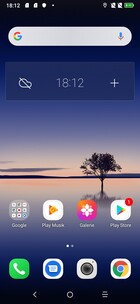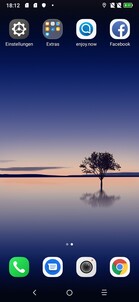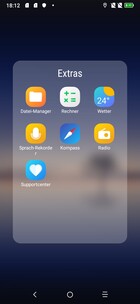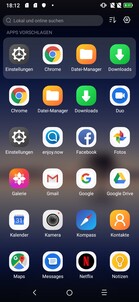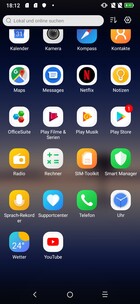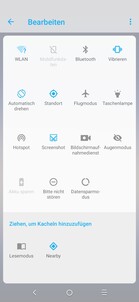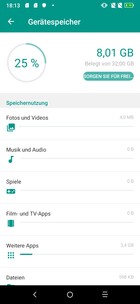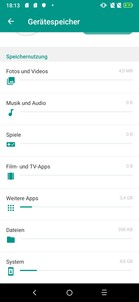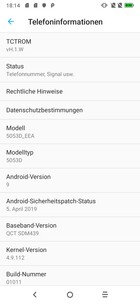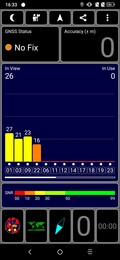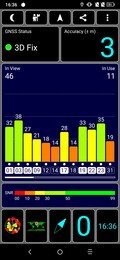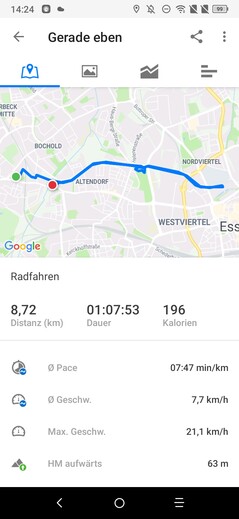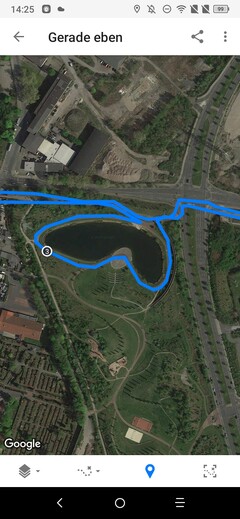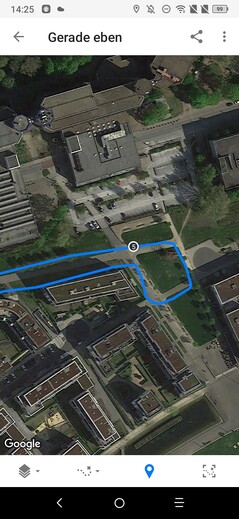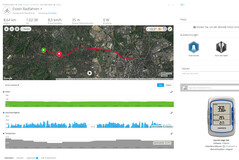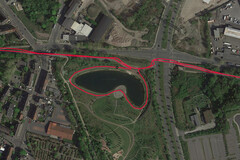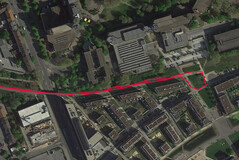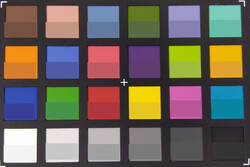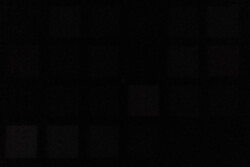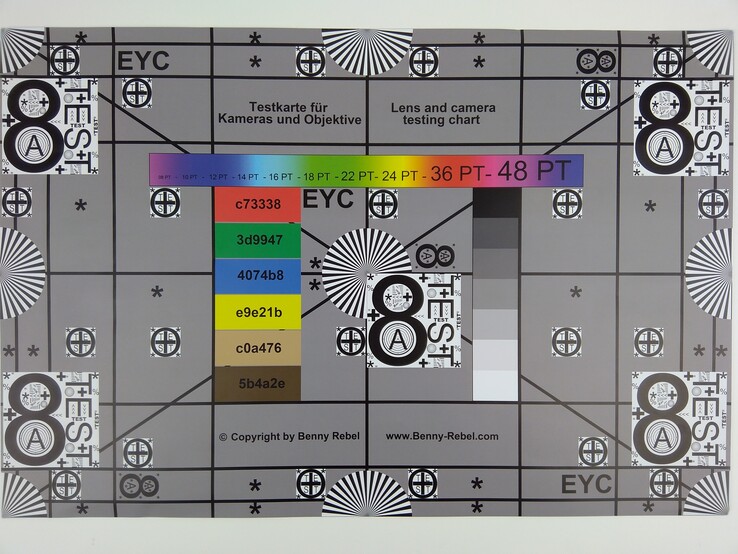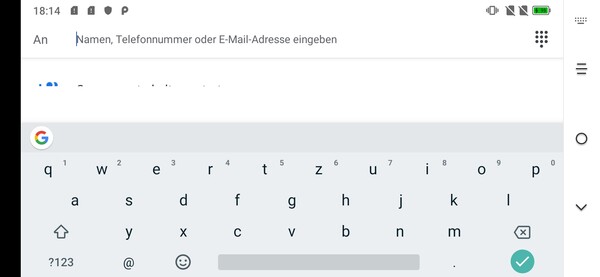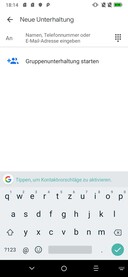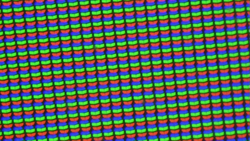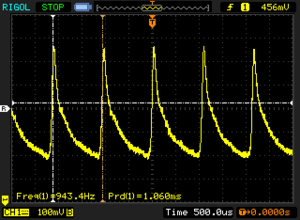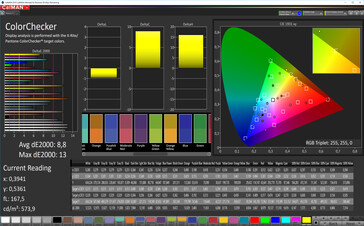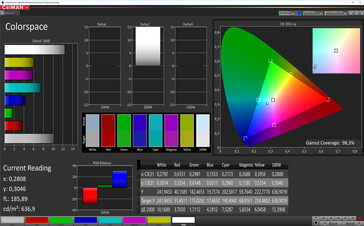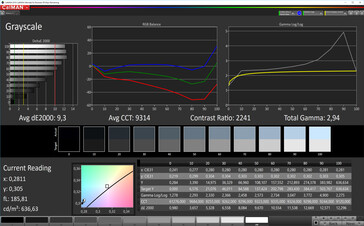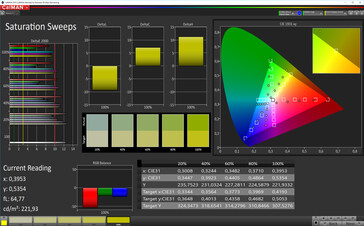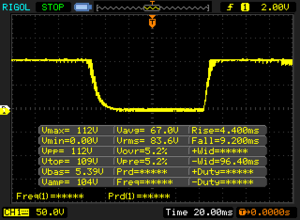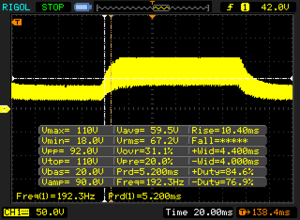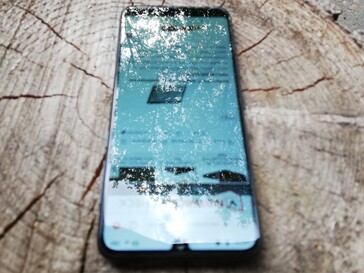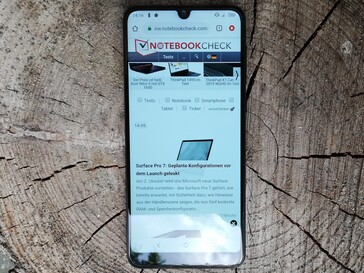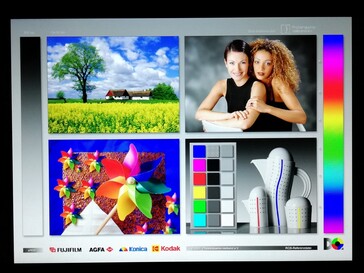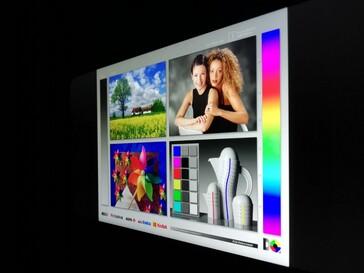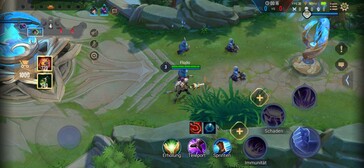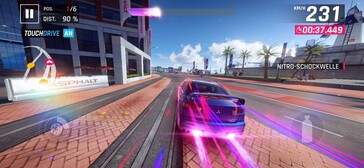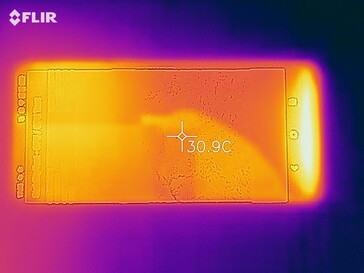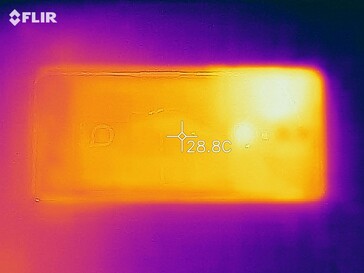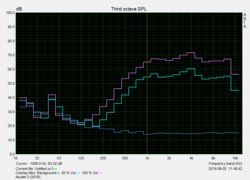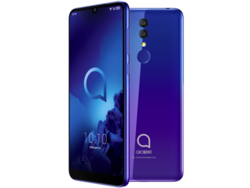Alcatel 3 (2019) Smartphone Review: A cheap handset that runs smoothly
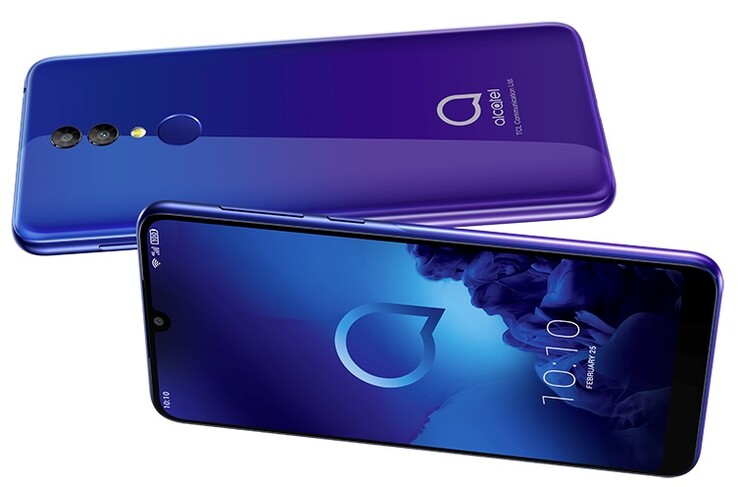
Last year we reviewed the Alcatel 3V, Alcatel 3X and Alcatel 5, which all had contrast-rich displays and took comparatively good shots in low-light. TCL, the parent company of Alcatel, did not follow industry trends with the three devices that we covered last year, but that has changed with the Alcatel 3 (2019).
The Alcatel 3 (2019) has a 5.9-inch display with a 19.5:9 aspect ratio, along with a waterdrop notch to maximise screen space. Inside, there is a Qualcomm Snapdragon 439 SoC that integrates a Qualcomm Adreno 505 GPU and 3 GB of RAM. There is also 32 GB of internal storage and a microSD card reader that accepts up to 128-GB cards. TCL also sells a 4 GB of RAM and 64 GB of storage variant for around 30 Euros (~US$33) more than our review unit.
There are plenty of sub-200 Euros (~US$221) smartphones on the market, so the Alcatel 3 (2019) has plenty of competition. Our comparison devices will include the LG K40, Nokia 4.2, Samsung Galaxy A20e and Xiaomi Mi A3 among others, although you can add other smartphones to our comparison tables too.
Case – Slimmer than most
The Alcatel 3 (2019) has a metal frame with curved edges that TCL complements with a plastic back that has a gradient finish. Our review unit feels sturdy, while the design looks a bit fresher than many uniform smartphones in our opinion. The Alcatel 3 (2019) also fits nicely in our hands thanks to its slim footprint and lightweight design, although the Galaxy A20e is around 4 g lighter than our review unit. TCL has placed the power button and volume rocker on the right-hand side of the device, with the company placing the SIM and microSD card slot on the opposite side. The two buttons have a slight play to them in their mounts, but the card reader sits flush with the frame of our review unit.
Connectivity – Dual SIM, but no NFC
TCL equips the Alcatel 3 (2019) with a Snapdragon 439 and 3 GB of RAM, as we mentioned earlier. The former integrates an Adreno 505 GPU among other components, and there is 32 GB of internal storage for storing apps and data. 32 GB has now become standard for entry-level handsets, so the Alcatel 3 (2019) is in good company here. While the device supports dual-SIM functionality and up to 128-GB microSD cards, it only has two card slots. There is no space to accommodate a microSD card and two nano-SIM cards, so you must choose between using a microSD and a second SIM. Both card slots support LTE though, although Wi-Fi calling (VoWiFI) and voice over LTE (VoLTE) are missing. TCL has also refrained from including an NFC chip too.
The Alcatel 3 (2019) has a microUSB port, which operates on the USB 2.0 standard. The device supports USB On-The-Go (OTG) though, meaning that you can connect external peripherals like a keyboard and mouse. TCL has included a 3.5 mm headphone jack too for connecting headphones or external speakers. The device is certified for Camera2 API Level 3 and DRM Widevine L3, the latter of which restricts it to streaming DRM-protected content from the likes of Amazon Prime and Netflix in standard definition.
Software – An upgrade to Android 9.0 Pie is available
The Alcatel 3 (2019) ships with Android Oreo, but TCL has rolled out Android 9.0 Pie, which we installed on our review unit. The build included April 5, 2019, Android security patches, for reference. TCL has made minor adjustments from stock Android, so you should not need too much acclimatising if you are familiar with Android. There are only a few third-party apps too, including OfficeSuite, Facebook and Netflix. TCL has also included some in-house apps, one of which it calls enjoy.now. The app contains tips and tricks for using the Alcatel 3 (2019), along with special offers and coupons. You can set up multiple user accounts in the settings menu should you wish to do so.
Communication & GPS – LTE, but slow Wi-Fi
The Alcatel 3 (2019) can connect to GSM, 3G and LTE networks, the latter via Cat 4 for up to 50 Mb/s uploads and 150 Mb/s downloads. The device also supports Bluetooth 4.2 and up to IEEE 802.11n Wi-Fi. As a result, the device can only connect to 2.4 GHz Wi-Fi networks, and not 5 GHz ones.
Correspondingly, the Alcatel 3 (2019) could only achieve slow transfer speeds in our Wi-Fi tests. Our review unit averaged 45.5 Mb/s when receiving data and 41.5 Mb/s when sending data, which puts it on par with most of our comparison devices. Only the LG K40 and Xiaomi Mi A3 exceeded 100 Mb/s in either test.
| Networking | |
| iperf3 transmit AX12 | |
| Xiaomi Mi A3 | |
| Alcatel 3 2019 | |
| Samsung Galaxy A20e | |
| LG K40 | |
| Nokia 4.2 | |
| iperf3 receive AX12 | |
| LG K40 | |
| Xiaomi Mi A3 | |
| Samsung Galaxy A20e | |
| Nokia 4.2 | |
| Alcatel 3 2019 | |
According to the app GPS Test, the Alcatel 3 (2019) uses A-GPS, GLONASS, BeiDou and QZSS for location services. Our review unit proved rather accurate outdoors, with it able to maintain a satellite fix with up to three metres accuracy during our tests. The device could not find us when we tested it indoors, though.
We also took the Alcatel 3 (2019) on a bike ride to compare its location accuracy against our reference bike computer, the Garmin Edge 500. Our review unit could not track us as accurately as the Garmin did, with it deviating on straight sections. The Alcatel did a bit job when cornering, although it plotted a slightly wider route than the Garmin did. Overall, the Alcatel 3 (2019) should be accurate enough for all daily navigation tasks.
Telephone Features & Call Quality – Clear calls with the Alcatel 3
TCL relies on the Google suite of telephony apps, which function just as they do on other devices that we have tested. As the screenshot to the right demonstrates, the Phone app has tabs for favourites, call history and contacts, with a search bar, settings button and voice input sitting above them.
The earpiece in our review unit gets moderately loud, which made it difficult to hear our call partner in noisy environments, like on a busy street. However, we had no issues when calling from quieter environments, during which the microphone picked up our voice clearly, and the earpiece delivered our call partner’s voice without any distortion. The included headphones worked well during our test calls too, which you can connect to the device’s 3.5 mm jack. The headphones are slightly louder than the earpiece but deliver comparable sound quality.
Cameras - Simple cameras
TCL equips the Alcatel 3 (2019) with dual rear-facing cameras. The main camera is a 13 MP 1/3-inch sensor that has an f/2.0 aperture and a 1.12 μm pixel width. By contrast, the secondary camera, which also has a 1.12 μm pixel width, is a 5 MP 1/5-inch sensor with an f/2.4 aperture.
There is also a front-facing camera that offers 8 MP with an f/2.4 aperture, a 1/4 sensor size and 1.12 μm wide pixels. The camera takes passable selfies, but colours look pale. The default camera app also automatically applies a strong bokeh effect, which makes the edge of our face look blurry. Details and fine structures are recognisable, but these also look blurry upon looking closely. TCL includes several options in the default camera app, including beautification effects that essentially smooth out any imperfections. There is an AI emoji mode too that simulates animated animal heads, much like Apple’s Animojis. There is no professional or manual mode, though.
The main rear-facing camera takes good photos too, but they also have a rough grain to them even at low zoom levels. The 13 MP sensor reproduces colours more vividly than the front-facing camera does, albeit with poor delineation from each other. The same applies to object edges, which are camera frays. These shortcomings occur when taking macro photos too, with blur and frayed object edges especially noticeable in the background even without zooming. The focused object looks sharper though, and a coarse-grain only sets in when we look closely.
The 13 MP sensor picks out our test objects in low-light too, but they look overly pale and dark as scene 3 below demonstrates. There are no totally black areas, but the camera cannot reproduce fine details and structures.
The default camera app contains options for colour filters, AR modes, and a manual mode. The latter allows you to adjust ISO levels, shutter speed, brightness, exposure and white balance. TCL has incorporated Google Lens as well, which can retrieve information from the internet about the object in focus.
Our test videos offer a similar image quality to those of our sample pictures. The main camera compensates for changing lighting conditions quickly, while an image stabiliser accounts for small camera shakes. The camera can record in 480p, 720p or 1080p, but there are no slow-motion options.
We also subjected our review unit to camera tests under controlled lighting conditions, which revealed that the Alcatel 3 (2019) reproduces most colours too brightly compared to the ColorChecker Passport reference colours. Conversely, grey tones look too dark. Hardly any colours can be made out at 1 lux though.
Similarly, while our review unit does a good job of capturing our test chart in good lighting, it is almost unrecognisable at 1 lux. As the first image demonstrates, the main camera picks up fine details, colours and textures nicely. There is a distinct pallor in the lower corners of our test photo though.
Accessories & Warranty – Alcatel includes only the essentials
The Alcatel 3 (2019) comes with a USB power adapter, a matching microUSB cable, headphones and a card slot tool. TCL does not sell any Alcatel 3 (2019) specific accessories though.
The device comes with 24 months warranty. Please see our Guarantees, Return Policies & Warranties FAQ for country-specific information.
Input Devices & Operation - Fluid inputs and a reliable fingerprint scanner
TCL preinstalls Google Gboard as the default keyboard app, which works just as well as it has on other devices that we have tested. The touchscreen in our review unit responds precisely to any touch and reproduces it onscreen without delay. The combination of a glossy display and smooth performance makes for a pleasant experience, with there being no hiccups during our tests. The accelerometer reacted precisely during our tests too and quickly rotated the orientation of the screen when we moved our review unit.
The Alcatel 3 (2019) has a fingerprint reader, which TCL has placed on the back of the device. The one in our review unit reliably recognised our registered fingerprints and worked without issue during our tests.
Display – A bright and contrast-rich IPS panel
As we mentioned earlier, the Alcatel 3 (2019) has a 5.9-inch display that operates in a 19.5:9 aspect ratio. TCL has used an IPS panel that resolves at 1560x720, putting it on par with our comparison devices. Only the Xiaomi Mi A3 has an AMOLED panel of our comparison devices, for reference. Our review unit reached an average maximum brightness of 608 cd/m² according to X-Rite i1Pro 2, and 625 cd/m² with the ambient light sensor switched on. Both figures clearly exceed those of our comparison devices, although peak luminosity drops to 427 cd/m² in the more practical APL50 test, putting the Alcatel 3 (2019) on par with its competitors. The display is 89% evenly lit too, which is not bad. However, all our comparison devices are a few percent more evenly lit.
The panel in our review unit also flickers at 943.4 Hz, even at 100% brightness. This value is high, but it may still cause health issues like eye strain and headaches for those who are PWM sensitive.
| |||||||||||||||||||||||||
Brightness Distribution: 89 %
Center on Battery: 648 cd/m²
Contrast: 2492:1 (Black: 0.26 cd/m²)
ΔE ColorChecker Calman: 8.8 | ∀{0.5-29.43 Ø4.79}
ΔE Greyscale Calman: 9.3 | ∀{0.09-98 Ø5}
98.3% sRGB (Calman 2D)
Gamma: 2.94
CCT: 9314 K
| Alcatel 3 2019 IPS, 1560x720, 5.9" | Nokia 4.2 IPS, 1520x720, 5.7" | Xiaomi Mi A3 AMOLED, 1560x720, 6.1" | LG K40 IPS, 1440x720, 5.7" | Samsung Galaxy A20e IPS, 1560x720, 5.8" | |
|---|---|---|---|---|---|
| Screen | -0% | -2% | -8% | -13% | |
| Brightness middle (cd/m²) | 648 | 445 -31% | 348 -46% | 475 -27% | 475 -27% |
| Brightness (cd/m²) | 608 | 424 -30% | 355 -42% | 467 -23% | 473 -22% |
| Brightness Distribution (%) | 89 | 91 2% | 91 2% | 90 1% | 93 4% |
| Black Level * (cd/m²) | 0.26 | 0.26 -0% | 0.32 -23% | 0.35 -35% | |
| Contrast (:1) | 2492 | 1712 -31% | 1484 -40% | 1357 -46% | |
| Colorchecker dE 2000 * | 8.8 | 5.9 33% | 5.86 33% | 5.95 32% | 6.8 23% |
| Colorchecker dE 2000 max. * | 13 | 9.3 28% | 15.6 -20% | 12.62 3% | 13.4 -3% |
| Greyscale dE 2000 * | 9.3 | 6.8 27% | 3.6 61% | 7.9 15% | 8.7 6% |
| Gamma | 2.94 75% | 2.2 100% | 2.232 99% | 2.331 94% | 2.33 94% |
| CCT | 9314 70% | 8443 77% | 7051 92% | 8202 79% | 9385 69% |
* ... smaller is better
Screen Flickering / PWM (Pulse-Width Modulation)
| Screen flickering / PWM detected | 943 Hz | ≤ 100 % brightness setting | |
The display backlight flickers at 943 Hz (worst case, e.g., utilizing PWM) Flickering detected at a brightness setting of 100 % and below. There should be no flickering or PWM above this brightness setting. The frequency of 943 Hz is quite high, so most users sensitive to PWM should not notice any flickering. In comparison: 53 % of all tested devices do not use PWM to dim the display. If PWM was detected, an average of 8152 (minimum: 5 - maximum: 343500) Hz was measured. | |||
Our measurements show that the Alcatel 3 (2019) has an excellent contrast ratio of 2,492:1, in part because of its 0.26 cd/m² black value. As a result, the display separates colours well, and black areas look vibrant.
CalMAN analysis also shows that the Alcatel 3 (2019) under-represents green and red tones. TCL includes a reading mode, which adds a yellow tint to the display to reduce blue light exposure, but there are no other display options or modes. The intensity of the reading mode can be adjusted too.
Display Response Times
| ↔ Response Time Black to White | ||
|---|---|---|
| 13.6 ms ... rise ↗ and fall ↘ combined | ↗ 4.4 ms rise | |
| ↘ 9.2 ms fall | ||
| The screen shows good response rates in our tests, but may be too slow for competitive gamers. In comparison, all tested devices range from 0.1 (minimum) to 240 (maximum) ms. » 33 % of all devices are better. This means that the measured response time is better than the average of all tested devices (20.3 ms). | ||
| ↔ Response Time 50% Grey to 80% Grey | ||
| 27.6 ms ... rise ↗ and fall ↘ combined | ↗ 10.4 ms rise | |
| ↘ 17.2 ms fall | ||
| The screen shows relatively slow response rates in our tests and may be too slow for gamers. In comparison, all tested devices range from 0.165 (minimum) to 636 (maximum) ms. » 36 % of all devices are better. This means that the measured response time is better than the average of all tested devices (31.7 ms). | ||
Performance – A basic smartphone that runs surprisingly smoothly
As we mentioned earlier, the Alcatel 3 (2019) comes with a Snapdragon 439 SoC that integrates an Adreno 505 GPU, 3 GB of RAM and 32 GB of internal storage. These specifications are comparable with those of our comparison devices and are powerful enough for most everyday applications. Our review unit always performed smoothly during our tests, even if it only finished in the midfield of our synthetic benchmark comparison tables. The Alcatel 3 (2019) generally matches the performance of the Galaxy A20e and Nokia 4.2 in synthetic benchmarks.
| PCMark for Android | |
| Work performance score (sort by value) | |
| Alcatel 3 2019 | |
| Nokia 4.2 | |
| Xiaomi Mi A3 | |
| LG K40 | |
| Samsung Galaxy A20e | |
| Average Qualcomm Snapdragon 439 (5880 - 6228, n=6) | |
| Work 2.0 performance score (sort by value) | |
| Alcatel 3 2019 | |
| Nokia 4.2 | |
| Xiaomi Mi A3 | |
| LG K40 | |
| Samsung Galaxy A20e | |
| Average Qualcomm Snapdragon 439 (4412 - 4791, n=6) | |
| GFXBench 3.0 | |
| on screen Manhattan Onscreen OGL (sort by value) | |
| Alcatel 3 2019 | |
| Nokia 4.2 | |
| Xiaomi Mi A3 | |
| LG K40 | |
| Samsung Galaxy A20e | |
| Average Qualcomm Snapdragon 439 (9.3 - 19, n=6) | |
| Average of class Smartphone (18 - 166, n=157, last 2 years) | |
| 1920x1080 1080p Manhattan Offscreen (sort by value) | |
| Alcatel 3 2019 | |
| Nokia 4.2 | |
| Xiaomi Mi A3 | |
| LG K40 | |
| Samsung Galaxy A20e | |
| Average Qualcomm Snapdragon 439 (9.7 - 19, n=6) | |
| Average of class Smartphone (12 - 606, n=156, last 2 years) | |
| GFXBench 3.1 | |
| on screen Manhattan ES 3.1 Onscreen (sort by value) | |
| Alcatel 3 2019 | |
| Nokia 4.2 | |
| Xiaomi Mi A3 | |
| LG K40 | |
| Samsung Galaxy A20e | |
| Average Qualcomm Snapdragon 439 (6 - 14, n=6) | |
| Average of class Smartphone (11 - 166, n=157, last 2 years) | |
| 1920x1080 Manhattan ES 3.1 Offscreen (sort by value) | |
| Alcatel 3 2019 | |
| Nokia 4.2 | |
| Xiaomi Mi A3 | |
| LG K40 | |
| Samsung Galaxy A20e | |
| Average Qualcomm Snapdragon 439 (6.4 - 6.6, n=6) | |
| Average of class Smartphone (8.4 - 413, n=156, last 2 years) | |
| AnTuTu v7 - Total Score (sort by value) | |
| Alcatel 3 2019 | |
| Nokia 4.2 | |
| Xiaomi Mi A3 | |
| LG K40 | |
| Samsung Galaxy A20e | |
| Average Qualcomm Snapdragon 439 (75175 - 79792, n=3) | |
Similarly, the Alcatel 3 (2019) finished in the midfield of our browser benchmark comparison tables, where it trades blows with the Nokia 4.2. The preinstalled Chrome browser loaded websites quickly in everyday use, with scrolling always remaining smooth too. Only media content occasionally took a moment to load.
| JetStream 1.1 - Total Score | |
| Xiaomi Mi A3 (Chrome 76) | |
| Samsung Galaxy A20e (Chrome 72.0.3626.121) | |
| Nokia 4.2 (Chrome 74) | |
| Alcatel 3 2019 (Chrome 72) | |
| Average Qualcomm Snapdragon 439 (25.3 - 27.1, n=6) | |
| WebXPRT 3 - Overall | |
| Average of class Smartphone (38 - 380, n=38, last 2 years) | |
| Xiaomi Mi A3 (Chrome 76) | |
| Samsung Galaxy A20e (Chrome 72.0.3626.121) | |
| Nokia 4.2 (Chrome 74) | |
| Alcatel 3 2019 (Chrome 72) | |
| Average Qualcomm Snapdragon 439 (32 - 38, n=6) | |
| LG K40 (Chrome 74) | |
| Octane V2 - Total Score | |
| Average of class Smartphone (2228 - 121337, n=200, last 2 years) | |
| Xiaomi Mi A3 (Chrome 76) | |
| Samsung Galaxy A20e (Chrome 72.0.3626.121) | |
| Alcatel 3 2019 (Chrome 72) | |
| Nokia 4.2 (Chrome 74) | |
| Average Qualcomm Snapdragon 439 (4512 - 4958, n=6) | |
| LG K40 (Chrome 74) | |
| Mozilla Kraken 1.1 - Total | |
| LG K40 (Chrome 74) | |
| Average Qualcomm Snapdragon 439 (9768 - 10143, n=6) | |
| Alcatel 3 2019 (Chrome 72) | |
| Nokia 4.2 (Chrome 74) | |
| Samsung Galaxy A20e (Chrome 72.0.3626.121) | |
| Xiaomi Mi A3 (Chrome 76) | |
| Average of class Smartphone (257 - 28190, n=155, last 2 years) | |
* ... smaller is better
Around 24 GB of the 32 GB of internal storage was available when we first booted our review unit. AndroBench demonstrates that TCL has equipped the device with comparatively fast storage, although the Xiaomi Mi A3 consistently outperforms the Alcatel 3 (2019) here.
The device achieved decent transfer speeds in the corresponding microSD benchmarks with our Toshiba Exceria Pro M501 reference card. However, our review unit could only format expandable storage as external memory; it could not save any apps or data to our reference card.
| Alcatel 3 2019 | Nokia 4.2 | Xiaomi Mi A3 | LG K40 | Samsung Galaxy A20e | Average 32 GB eMMC Flash | Average of class Smartphone | |
|---|---|---|---|---|---|---|---|
| AndroBench 3-5 | -43% | 135% | -16% | -3% | -9% | 1213% | |
| Sequential Read 256KB (MB/s) | 305.8 | 220.4 -28% | 502 64% | 261.7 -14% | 300.4 -2% | 242 ? -21% | 2213 ? 624% |
| Sequential Write 256KB (MB/s) | 87.2 | 18.17 -79% | 184 111% | 100.5 15% | 103.6 19% | 100.5 ? 15% | 1829 ? 1997% |
| Random Read 4KB (MB/s) | 84.9 | 17.51 -79% | 126.9 49% | 52.6 -38% | 79.8 -6% | 43.1 ? -49% | 293 ? 245% |
| Random Write 4KB (MB/s) | 16.05 | 4.31 -73% | 117.4 631% | 10 -38% | 13.18 -18% | 22.3 ? 39% | 335 ? 1987% |
| Sequential Read 256KB SDCard (MB/s) | 86.6 ? | 86.7 ? 0% | 67.8 ? -22% | 77.6 ? -10% | 79.2 ? -9% | 71.8 ? -17% | |
| Sequential Write 256KB SDCard (MB/s) | 64.9 ? | 65.9 ? 2% | 50.1 ? -23% | 57.4 ? -12% | 64.3 ? -1% | 52.9 ? -18% |
Games - Suitable for undemanding games
The Adreno 505 dates back to 2015 and remains powerful enough for undemanding games. Arena of Valor and Asphalt 9: Legends ran smoothly at medium graphics, with the touchscreen keeping pace too. Hence, you should have no issues with performing drag-and-drop movements. We also encountered no issues with the accelerometer during our gaming tests.
Emissions – Good surface temperatures and stereo speakers
Temperature
Our tests certify that the Alcatel 3 (2019) remains comparatively cool even under load. Surface temperatures fluctuate between 26.6 °C and 29.8 °C at idle and reach 31.9 °C under load, so the device should never feel too hot to touch even during prolonged gaming sessions. We also noticed no thermal throttling during our tests, either.
(+) The maximum temperature on the upper side is 31.9 °C / 89 F, compared to the average of 35.2 °C / 95 F, ranging from 21.9 to 247 °C for the class Smartphone.
(+) The bottom heats up to a maximum of 31.5 °C / 89 F, compared to the average of 34 °C / 93 F
(+) In idle usage, the average temperature for the upper side is 28 °C / 82 F, compared to the device average of 32.9 °C / 91 F.
Speakers
TCL equips the Alcatel 3 (2019) with stereo speakers, which are not overly loud but deliver relatively balanced sound. Deeper sounds fall off at high volumes, but the speakers are good enough for reproducing speech. We would recommend using external audio equipment like headphones or speakers when listing to music or watching videos though. These can be connected via Bluetooth 4.2 or the 3.5 mm headphone jack. The latter grips jacks tightly and does not negatively affect the quality of audio reproduced.
Alcatel 3 2019 audio analysis
(±) | speaker loudness is average but good (79.1 dB)
Bass 100 - 315 Hz
(-) | nearly no bass - on average 37% lower than median
(+) | bass is linear (6.4% delta to prev. frequency)
Mids 400 - 2000 Hz
(±) | reduced mids - on average 5.9% lower than median
(±) | linearity of mids is average (7.5% delta to prev. frequency)
Highs 2 - 16 kHz
(+) | balanced highs - only 2.6% away from median
(+) | highs are linear (3.6% delta to prev. frequency)
Overall 100 - 16.000 Hz
(±) | linearity of overall sound is average (26.9% difference to median)
Compared to same class
» 69% of all tested devices in this class were better, 5% similar, 26% worse
» The best had a delta of 11%, average was 35%, worst was 134%
Compared to all devices tested
» 82% of all tested devices were better, 4% similar, 14% worse
» The best had a delta of 4%, average was 24%, worst was 134%
Samsung Galaxy A20e audio analysis
(±) | speaker loudness is average but good (81.6 dB)
Bass 100 - 315 Hz
(-) | nearly no bass - on average 27.1% lower than median
(±) | linearity of bass is average (9.4% delta to prev. frequency)
Mids 400 - 2000 Hz
(±) | reduced mids - on average 5.8% lower than median
(+) | mids are linear (5.4% delta to prev. frequency)
Highs 2 - 16 kHz
(±) | higher highs - on average 5.7% higher than median
(+) | highs are linear (2.5% delta to prev. frequency)
Overall 100 - 16.000 Hz
(±) | linearity of overall sound is average (24% difference to median)
Compared to same class
» 54% of all tested devices in this class were better, 8% similar, 37% worse
» The best had a delta of 11%, average was 35%, worst was 134%
Compared to all devices tested
» 71% of all tested devices were better, 6% similar, 22% worse
» The best had a delta of 4%, average was 24%, worst was 134%
Power Management – Comparatively low consumption and good runtimes
Power Consumption
Our measurements certify that the Alcatel 3 (2019) consumes between 0.63 W and 4.75 W when switched on. These values are on par with most of our comparison devices and well ahead of the Xiaomi Mi A3.
The included USB charger has a maximum power output of 5 W. Since the Alcatel 3 (2019) only consumes up to 4.75 W, you should have no problems with charging the device when gaming or during any other resource-intensive tasks.
| Off / Standby | |
| Idle | |
| Load |
|
Key:
min: | |
| Alcatel 3 2019 3500 mAh | Nokia 4.2 3000 mAh | Xiaomi Mi A3 4030 mAh | LG K40 3000 mAh | Samsung Galaxy A20e 3000 mAh | Average Qualcomm Snapdragon 439 | Average of class Smartphone | |
|---|---|---|---|---|---|---|---|
| Power Consumption | -8% | -46% | -5% | 7% | -27% | -55% | |
| Idle Minimum * (Watt) | 0.63 | 0.74 -17% | 0.8 -27% | 0.68 -8% | 0.66 -5% | 0.82 ? -30% | 0.847 ? -34% |
| Idle Average * (Watt) | 1.66 | 1.9 -14% | 2 -20% | 1.53 8% | 1.63 2% | 2.21 ? -33% | 1.431 ? 14% |
| Idle Maximum * (Watt) | 1.73 | 2.21 -28% | 3.3 -91% | 1.95 -13% | 1.67 3% | 2.49 ? -44% | 1.61 ? 7% |
| Load Average * (Watt) | 3.17 | 3.04 4% | 4.1 -29% | 3.5 -10% | 2.77 13% | 3.78 ? -19% | 7.09 ? -124% |
| Load Maximum * (Watt) | 4.75 | 4.15 13% | 7.7 -62% | 4.9 -3% | 3.66 23% | 5.24 ? -10% | 11.2 ? -136% |
* ... smaller is better
Battery Life
TCL equips the Alcatel 3 (2019) with a 3,500 mAh battery, which lasted 15:23 hours in our practical Wi-Fi battery life test. In short, runtimes matched our expectations here considering the device’s battery capacity. Only the Xiaomi Mi A3 lasted longer than our review unit in our Wi-Fi battery life test of our comparison devices.
The included charger takes around three hours to fully recharge the Alcatel 3 (2019), for reference.
| Alcatel 3 2019 3500 mAh | Nokia 4.2 3000 mAh | Xiaomi Mi A3 4030 mAh | LG K40 3000 mAh | Samsung Galaxy A20e 3000 mAh | |
|---|---|---|---|---|---|
| Battery runtime | |||||
| WiFi v1.3 (h) | 15.4 | 11.6 -25% | 16.4 6% | 12.4 -19% | 11.9 -23% |
Pros
Cons
Verdict
The Alcatel 3 (2019) is a rock-solid budget smartphone that excelled in daily use. The system always remained smooth during our tests, with simple apps loading quickly. TCL has equipped the device with a bright and contrast-rich display that impressed us too. Moreover, the Alcatel 3 (2019) has excellent battery life and should remain accurate enough when navigating somewhere.
The Alcatel 3 (2019) is cheap and offers smooth system performance. Its cameras could be better though, but it also has good battery life, along with a bright and contrast-rich display.
There are downsides, though. You must live with limited storage, with it not possible to store apps or data on expandable storage. Additionally, the cameras are only good enough for simple snapshots. Overall, these are acceptable shortcomings considering how cheap the Alcatel 3 (2019) is. The device would be best suited to those whose demands on smartphones are not too high.
Alcatel 3 2019
- 09/27/2019 v7 (old)
Mike Wobker













